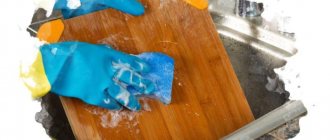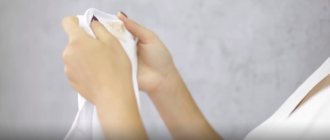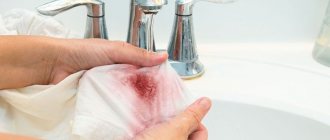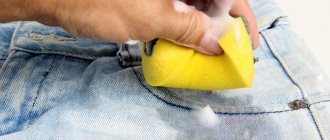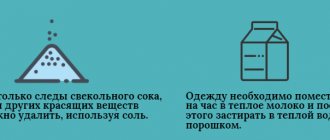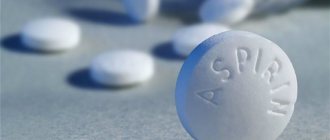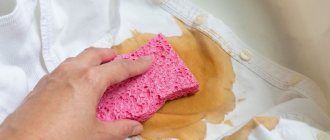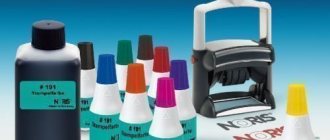Update date: 11/16/2020 16:50:16 78895 Share:
Author: Maria Feldshtein
*Review of the best according to the editors of simplerule.ru. About the selection criteria. This material is subjective in nature, does not constitute advertising and does not serve as a purchase guide. Before purchasing, consultation with a specialist is required.
It is quite difficult to remove blood stains from clothes or upholstered furniture, especially old ones. Even expensive household chemicals cannot cope with this task. Apparently, this is why there are many alternative “folk” methods for removing bloody marks from different types of fabrics and other surfaces. The staff of our magazine found more than a dozen recipes that use inexpensive improvised means and tested the effectiveness of each of them. The effect of store-bought stain removers was also evaluated. The results of the examination and tips for removing fresh and old blood stains are presented below.
General rules
If an accident occurs that causes bleeding, and marks remain on clothing or bedding, do not panic and consider the item hopelessly damaged. Blood can most often be washed off, but to do this you need to know several features.
It is best to remove blood stains immediately after contamination (or within the next 2-3 hours). The chances of a positive outcome in saving the item are much higher before the blood has had time to dry and be absorbed into the fibers of the fabric.
Clothes stained with blood should not be washed in hot water. Blood is an organic substance that contains the protein hemoglobin, so at high water temperatures (more precisely, above 420C), it will coagulate. After this, it will be almost impossible to remove the stains - the only hope is dry cleaning.
The area of contamination should not be rubbed with a rag or sponge, otherwise the blood will penetrate deep into the fibers of the fabric, and it will be more difficult to get rid of its traces. It is best to rinse the item under cold tap water. Remove stains from upholstered furniture or mattresses using light blotting movements.
When removing blood from the sleeves or trouser legs, you should place a cotton napkin or cotton pad between them. This will prevent the mark from imprinting onto the other side.
Our experts guarantee that knowledge of these rules will half solve the problem of removing blood stains from wardrobe items or furniture. Now let’s figure out how and what is the best way to remove them.
Recommendations
Before you wash blood from white clothes, check out these simple tips that will make the removal process easier:
- The sooner you start removing stains from white clothes, the greater the likelihood of a successful result. Dried marks are more difficult to remove, since blood components are deeply absorbed into the tissue structure.
- To remove blood from white things and not damage their structure, give preference to more gentle products. Aggressive methods can be used if no other options have helped.
- Before using the product, test its reaction on an area that is not visible.
- If you use a stain remover, then strictly follow the instructions for use and observe the time after which it needs to be washed off.
It is recommended not to dry things in the sun. If the mark is not completely washed off, then under the influence of direct sunlight it will only be absorbed deeper. The same goes for hot water – don’t wash in it. The protein contained in the blood will penetrate deeper and more firmly into the tissue.
How to remove a fresh stain
Fresh stains are the easiest to get rid of. This is why we do not recommend putting off washing clothes. If possible, you should begin removing the blood immediately.
If clothes or bedding are soiled
To remove traces of blood from tissue, the algorithm is as follows:
- Rinse the soiled item under strong pressure of cold water.
- Soak in a basin, adding washing powder to the water or soaping with laundry soap.
- Leave the item to soak for 30-60 minutes, periodically washing the stained area with your hands.
- After a while, wash the item thoroughly by hand or in a washing machine.
- As a rule, after such actions, the blood is washed off from clothes without leaving a trace.
If it is not possible to quickly wash the item, you should apply one of the following compositions to the fresh stain:
- hydrogen peroxide;
- a paste of soda and water;
- toothpaste;
- Dish or window cleaner.
This will prolong the drying time of the blood and partially destroy its composition. The stains will come off much easier even after a few hours.
Removal with saliva
We found one unusual way to remove fresh blood, which at first seemed dubious to our experts - using saliva. It contains enzymes that dissolve protein molecules, making the stain disappear before your eyes. We decided to check it out - the result exceeded all expectations.
Saliva is an effective method of removing fresh blood from clothing that actually works. It can be used immediately after contamination and under almost any circumstances. The only drawback is its use on small dirty areas.
How to remove blood stains from upholstery or carpet
If a mattress, sofa or carpet is stained with blood, you should do the following:
- apply a thick mixture of washing powder and cold water to the stain with a sponge, rag or cotton wool or a drop of dishwashing detergent (or stain remover);
- wait 30-60 minutes;
- Pour clean water into the basin and wash until the stain is completely removed.
If yellowish marks still remain on furniture, carpet or clothing, we recommend using one (or more) of the methods given below.
How to remove dried and old blood stains from clothes
Old stains are much more difficult to remove. You won't be able to remove them with regular powder or toilet soap. In the collection of folk recipes there are several ways to remove old blood stains. Our experts tested them: some were really effective, others were not.
Below are the most popular methods with instructions for use in order of decreasing stain removal effect. They can be used to clean clothes, upholstery and carpets.
Hydrogen peroxide 3%
Peroxide is the most popular stain remover among people. It has oxidizing and bleaching properties, so it effectively removes many types of stains.
Advantages
- available (can be purchased at any pharmacy);
- safe for health;
- inexpensive (8-12 rubles);
- effectively removes the effects of bleeding;
- without smell.
Flaws
- may discolor areas of colored items, so it can only be used on light-colored fabrics or clothes with stable coloring.
To remove blood you need:
- generously pour hydrogen peroxide onto the stained area;
- wait 15-20 minutes;
- rinse the item with water or wash it;
- repeat if necessary.
The product works wonders in removing stains, so repeating the procedure is unlikely to be necessary.
The fact that peroxide removes blood really well is also evidenced by reviews from doctors (especially emergency doctors and surgeons). This is their favorite method for removing blood stains from white coats.
If you don’t have peroxide on hand, but you have liquid for storing contact lenses, it can also be used to get rid of stains - it contains hydrogen peroxide.
Ammonia
Ammonia or ammonia (ammonium hydroxide solution) is the second most popular means for removing old blood stains. The bottle should be labeled “Ammonia 10%.”
Ammonia (ammonium chloride), used to fertilize plants, in the form of a white crystalline powder is not suitable for removing stains from clothing.
Advantages
- easy to find at the pharmacy;
- inexpensive (about 10 rubles);
- can be used for white and colored items;
- Removes traces of blood well.
Flaws
- has a sharp specific smell;
- you can be poisoned by vapors or get burned, toxic if ingested;
- Not suitable for removing stains from delicate fabrics (silk and wool).
We recommend dissolving 1 tbsp. ammonia in 1 glass of cold water and apply to the stain with a cotton pad. Or dissolve it in the same proportion and soak dirty clothes for 1 hour in a basin. After this, you need to wash it in the usual way (hand or machine wash).
To combat the effects of bleeding on clothing, you can use a window cleaner - it contains a considerable proportion of ammonia.
Laundry soap
Laundry soap is no longer so common in the kitchen or bathroom of modern families, however, our experts advise keeping at least one bar at home for various household purposes. Including to remove dried blood.
Advantages
- has excellent cleaning properties and easily copes with organic contaminants;
- inexpensive and accessible;
- does not corrode the fibers of even the most delicate fabrics;
- Suitable for cleaning white and colored items.
Flaws
- unpleasant odor;
- it takes time to get the effect.
There are two ways to remove blood stains:
Wet the contaminated area well, soap it generously, and leave for 20-30 minutes.
Grate the soap on a coarse grater (1/4 of a piece) and dissolve it in 3 liters of water, in which to soak the soiled item for 1-2 hours.
After these steps, clothes or linen should be thoroughly rubbed with your hands and washed by hand or in a machine.
We checked: blood stains actually come off after treatment with laundry soap.
Soda
You can use baking soda to remove ingrained blood from clothing, mattresses, or upholstery. It needs to be diluted in water in a 1:1 ratio and applied to the stained area for 20-30 minutes. After this, the pulp on the surface of the fabric should be rubbed with a toothbrush and left for another 10-15 minutes. Next, rinse the item thoroughly under running cold water and wash with powder.
Advantages
- available;
- inexpensive;
- safely;
- Suitable for all types of fabric.
Flaws
- you need to spend time preparing the gruel;
- does not deal with pollution as quickly and effectively.
Soda can remove dried traces of blood, but it does not remove old stains.
Starch (corn or potato)
If you need to remove dirt from silk, wool, viscose or microfiber, it is best to use starch. It carefully removes ingrained blood without disturbing the structure and color of the fabric.
To save a thing you need:
- dilute starch with water in a ratio of 1:3;
- apply to soiled fabric;
- wait for it to dry completely;
- remove starch with a dry cloth;
- wash in the usual way.
Traces of blood fade, but several such procedures may be needed to completely remove them.
Advantages
- suitable for delicate fabrics;
- safely.
Flaws
- it takes time to get results.
Expert opinion: starch is the best way to remove ingrained blood for delicate fabrics.
Lemon acid
Citric acid powder is also used to remove bloody marks, but it is only suitable for white things. Citric acid has good bleaching properties and effectively removes many types of stains.
Flaws:
- concentrated acid can cause irritation to the respiratory tract and skin (it is recommended to wear gloves);
- Can only be used on white cotton fabrics.
10 g of powder should be diluted in a tablespoon of cold water and applied to a cloth. After 15-20 minutes, thoroughly scrub the stained area with a toothbrush. After washing and drying the product, the stains become invisible.
Toothpaste
Our employees tested another way to rid things of fresh and old bloody marks:
- applied toothpaste to the stained area;
- wet the toothbrush with water and rubbed it thoroughly;
- left until the paste dries completely;
- washed the item.
As a method of combating old stains, toothpaste has proven to be ineffective. But she did a great job with fresh blood stains.
Glycerol
Some housewives have another remedy for removing stubborn blood stains - glycerin. It is recommended to heat it before use to 400C in a water bath and apply it to the stained area with a cotton pad.
We tested this method:
- Treat the stain with warm glycerin;
- waited 10-15 minutes;
- rubbed with a cotton pad;
- dripped a little more glycerin;
- repeated the procedure several times.
The spot gradually dissolved, decreasing in size. After washing, the item acquired pristine purity.
Advantages
- suitable for all types of fabric;
- safe;
- with difficulty, but removes stains.
Flaws
- takes time;
- does not affect old stains.
Warm glycerin can be used as a way to remove blood stains (especially if you need to wash delicate fabrics), but it is better to use more effective products.
Salt
Our experts also tested table salt as a cleansing agent. Its undoubted advantages are accessibility, safety and low cost. But does it get rid of bloody marks?
According to the folk recipe you need:
- dilute 5 tbsp. salt in two liters of hot water until the crystals dissolve;
- cool to room temperature;
- soak clothes for 8-10 hours;
- machine wash.
The salt did not cope with the task - the soiled item had to be saved by other methods.
Vinegar
There are recipes that use vinegar as a means of removing organic contaminants. We dripped a small amount onto an old stain - there was no result. Traces remained several hours later. The effect was zero even after several attempts to wash the fabric with a toothbrush. The yellowness remained even after washing with powder.
Vinegar does not remove old blood stains, but it makes fresh stains easier to remove using other means.
Removing traces of blood with store-bought stain removers
As it turns out, not all specialized industrial household chemicals can get rid of traces of ingrained blood. Let's review the most common store-bought stain removers and find out how effective they are.
Liquid stain remover Vanish Oxi Action
One of the most common household chemicals on the market and a popular stain remover among people.
Advantages
- does not contain chlorine, therefore safe for delicate fabrics;
- Inexpensive compared to other detergents - 100-150 rubles per 0.5 liter.
Flaws
- But all the advantages are negated by one single drawback - “Vanish” cannot cope with old traces of blood. It is effective only for removing fresh dirt.
Stain remover "Dr. Beckmann" for protein stains
The active formula based on German stain remover enzymes quickly breaks down and removes protein-based stains from fabric. You need to pour a few drops of the product onto the stain or soak the item in cold water with a stain remover.
Advantages
- effective;
- easy to use;
- does not harm fabric fibers;
- Suitable for white and colored items, carpets, upholstery.
Flaws
- difficult to buy (sold only in large supermarkets of household chemicals, in online stores);
- not cheap (cost 200 rubles for 50 ml).
Our experts recommend stain remover “Dr. Beckmann" for removing both fresh and old blood stains from any fabrics and surfaces.
Stain remover Ecover Ecological Stain Remover (Belgium)
Ecological stain remover for white and colored items based on enzymes and citric acid. Equipped with a brush for washing clothes.
Advantages
- does not irritate the skin of the hands;
- after washing it is completely washed out, leaving no odor or any traces;
- has a gentle effect on fabric fibers.
Flaws
- the first time it removes only fresh blood stains, it has practically no effect on old ones (it only lightens them a little);
- expensive (RUB 700/200 ml);
- can only be purchased in the online store.
The environmental stain remover did not pass the test in the fight against blood stains.
Stain remover ACE Oxi Magic
Chlorine-free bleach. After soaking soiled clothes for 30 minutes and washing with powder, no traces of fresh blood remain, and old stains become slightly less noticeable.
Conclusion: ACE oxygen bleach does not remove stubborn stains.
Review of household chemicals for removing old stains
In addition to available products, you can wash at home with powders and stain removers designed specifically to combat various dried stains (traces of blood, oil). When purchasing, pay attention to the composition, the label, which indicates which fabrics the composition is suitable for. Among the popular ones are:
- Vanish Oxi Action;
- Amway PreWash;
- Sarma Active;
- Frau Schmidt;
- Edelstar.
Some chemicals come in the form of a spray, stick, or soap that is applied to the dried blood stain immediately before washing. After processing, the item must be washed in the usual way.
Carefully read the instructions on the packaging; ignoring the requirements will lead to poor results and damage to the appearance of the product.
https://www.youtube.com/watch?v=zyoKmo2GQv0
